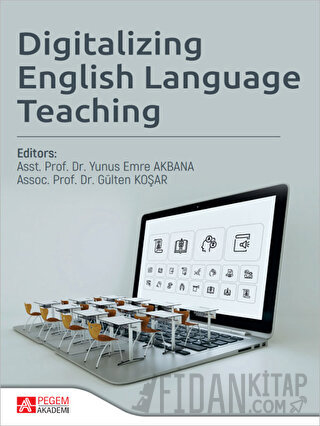
Traditional approaches may lose the ability to hold digitally talented actors in education to account for co-optioning by today’s technologies, which are no longer called 'modern' by Generation Z and Millennials. The wider impact of digitalizing teaching is undoubtedly shaped by today’s learners’ learning preferences. In order to better understand and improve students’ learning opportunities, the quest for designing new technologies has been a recent phenomenon after the Covid-19 has prompted the necessity of vibrant and contentious debates for greater recognition and space for interactional designs for language teaching. Still, there seem to be several major uncertainties through the lenses of English language teachers, who feel insufficiently equipped with technological pedagogical knowledge to transfer their teaching in the mode of digitalization.
Evermore researchers issue directives for what constitutes 'digitalization' and ‘language teaching’. This book is dedicated to providing a resource and a guide for understanding how technology can be used for English language teaching. Therefore, it aims to present hands-on applications and web-sources that can be useful for language teachers from primary to tertiary settings. Such a design can also be useful for teacher education programs, language policy makers, curriculum developers and other practitioners who would like to extend their professional knowledge. To this end, this book offers insights into what would constitute more deliberative ways to teach English through digitalization. To put forward more ideas for digitalizing supportive materials, each chapter offers one sample lesson plan on the focus of the chapter; namely, teaching reading, writing, listening, speaking, vocabulary, grammar and pronunciation.
Traditional approaches may lose the ability to hold digitally talented actors in education to account for co-optioning by today’s technologies, which are no longer called 'modern' by Generation Z and Millennials. The wider impact of digitalizing teaching is undoubtedly shaped by today’s learners’ learning preferences. In order to better understand and improve students’ learning opportunities, the quest for designing new technologies has been a recent phenomenon after the Covid-19 has prompted the necessity of vibrant and contentious debates for greater recognition and space for interactional designs for language teaching. Still, there seem to be several major uncertainties through the lenses of English language teachers, who feel insufficiently equipped with technological pedagogical knowledge to transfer their teaching in the mode of digitalization.
Evermore researchers issue directives for what constitutes 'digitalization' and ‘language teaching’. This book is dedicated to providing a resource and a guide for understanding how technology can be used for English language teaching. Therefore, it aims to present hands-on applications and web-sources that can be useful for language teachers from primary to tertiary settings. Such a design can also be useful for teacher education programs, language policy makers, curriculum developers and other practitioners who would like to extend their professional knowledge. To this end, this book offers insights into what would constitute more deliberative ways to teach English through digitalization. To put forward more ideas for digitalizing supportive materials, each chapter offers one sample lesson plan on the focus of the chapter; namely, teaching reading, writing, listening, speaking, vocabulary, grammar and pronunciation.










